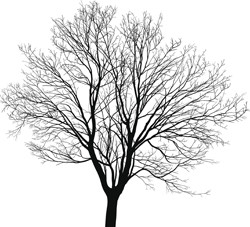The genetics of plant architecture
Research has identified a class of genes that play a role in both phyllotaxis (branch patterning) and rhizotaxis (root patterning). These genes, PLT3, -5 and -7, are known to interact with the plant hormone auxin, which coordinates many aspects of plant growth. The EU-funded 'A conserved mechanism regulating shoot and root lateral organ placement' (PHYLLORHIZOTAXIS) project aimed to better understand the interactions between PLT genes and auxin. The project applied genetics, biochemistry and bioinformatics to understand how this interaction controls phyllotaxis and rhizotaxis in the model plant Arabidopsis thaliana. Scientists identified several genes that can control the expression of PLTs in roots and stems, all of which are activated by the auxin hormone. This shows that auxin controls PLT expression at least to some extent. In mutated plants with no PLT gene expression, auxin transport and response genes were not activated to the same extent as in non-mutated plants. These mutants also allowed researchers to better understand the pattern of PLT expression in new branches or roots. Overall, PHYLLORHIZOTAXIS demonstrated that auxin and PLT genes form a complex feedback system in new plant structures. This research has contributed to our understanding of how plant architecture is controlled at the genetic level.
Keywords
Plant, gene network, stems, roots, phyllotaxis, rhizotaxis, PLT gene

